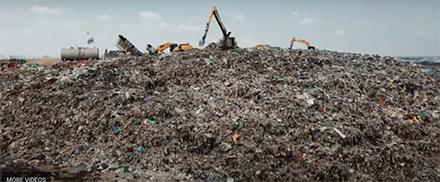Europe’s Packaging and Packaging Waste Directive (PPWD) is being replaced by the Packaging and Packaging Waste Regulation (PPWR), and outlines measures to prevent the production of packaging waste. Source: Timberbiz
These measures promote reuse of packaging and, where preventing packaging waste is not possible, then recycling.
While the absolute priority of this Regulation should be waste prevention, early drafts have had insufficient reduction requirements and targets.
Not all paper packaging can’t be recycled. The main reasons are that it is rarely properly sorted; there is little adequate recycling infrastructure; fibres can only be recycled five a handful of times before they become too short to use; and paper is often combined with other materials in mixed-material or composite packaging.
As a result, a significant proportion of paper-based packaging ends up in landfills or is incinerated. For example, McDonald’s estimates that only 5%-10% of their paper-based cups are recycled.
The industry claims that paper in the EU comprises roughly 50% recycled material. However, there is no standardised system for measuring this and the real figure is likely to be lower.
The remaining half of the material used for paper and cardboard is virgin fibre. This comes straight from forests or the forest plantations. Some virgin fibres are required because they are longer and therefore stronger.
But even if all items could be made from recycled material, there simply isn’t the supply to meet the demand. So, any increase in packaging demand will have to be met through increased forest destruction.
This highlights the critical need to prioritise reduction of packaging waste – this is the only sustainable solution.
Paper single-use packaging isn’t necessarily better than plastic packaging because it has a toll on forests. Rather than shifting from plastic to paper, we need to reduce packaging altogether.
Increased demand for pulp will contribute to deforestation and habitat destruction and have other negative impacts. There are already huge demands on forests for long-lived products like construction.
Reusable packaging is the most ecofriendly way to transport packages. Reusable delivery options already in use include sturdy plastic envelopes, durable plastic containers, and returnable crates supported through packaging deposit systems.
The alternative is unsustainable single-use self-sealing plastic envelopes (polybags) and single-use cardboard boxes. Single-use cardboard boxes use virgin fibres and result in forest destruction.
Putting in place systems to ensure 50% of e-commerce uses reusable packaging by 2030 could save 250,000 tonnes of resources, one billion cubic meters of water and 429,000 tonnes of carbon dioxide equivalent. By opting for reusable packaging, businesses and customers can minimise waste and contribute to a more environmentally friendly e-commerce landscape.






